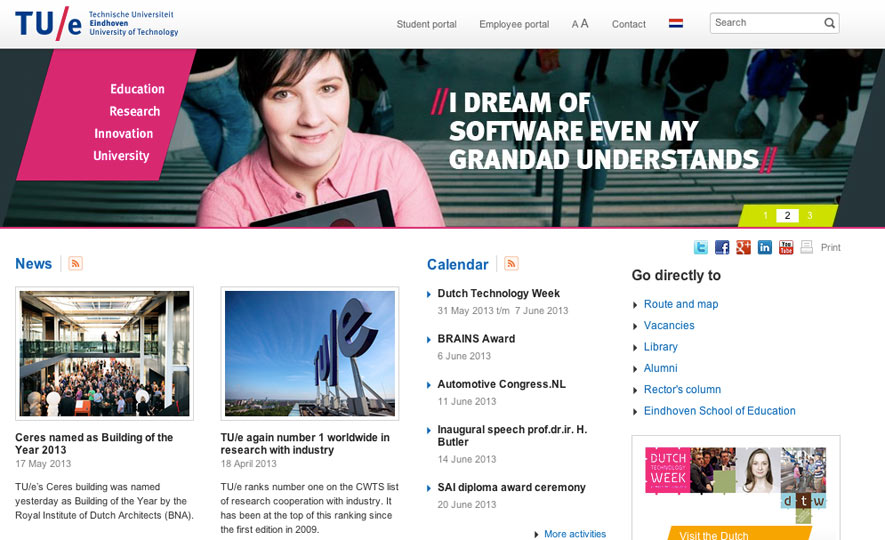
Culture
Ho Na Nae
Metro Goldwyn-Mayer (MGM) is not just one of Hollywood’s most famous studios—it’s also the second largest company in the world in terms of gambling profits. When the hotel-casino MGM Grand Las Vegas opened its doors in 1993, everything was spectacular. By size, it was the biggest in the world.
Metro Goldwyn-Mayer used its legendary lion as the image in its hotels. The entrance to the MGM grand was an enormous lion’s head through which one entered inside. Tourists and gamblers from all around the world started to arrive.
Shortly afterwards in the MGM Grand, they began to wonder about the lack of bookings from nationalities such as the Chinese—who are great gambling enthusiasts. An investigation then started, which concluded with a surprising discovery.
Far from the splendor sought with the entrance, many Asian gamblers saw it as they were being swallowed up by the lion’s jaws. In their Feng Shui beliefs, this was a symbol of bad luck, which is why the few Chinese people who entered the casino did so through the back door. The entrance was quickly changed to one that is a little more ordinary but that does not scare away Asian customers in Las Vegas.

Source: www.lasvegasgateway.com
Differences in perception
When considering a multicultural interface, there are tangible elements which we can work with: the format for dates, calendars that start on Sunday or on Monday, the way addresses are written, telephone numbers, the direction the writing goes in, measurement units, etc. Metaphors and symbols are elements that care should also be taken with in a multicultural interface. If there is not enough information, it is easy for us to design something that is perceived in a different way by different cultures.
In almost every part of the world, to indicate that everything is fine or to convey a positive feeling, you make the “OK” sign, bringing your index finger and thumb together while stretching the rest of the fingers on your hand. Although we think this is a universal sign, “OK” is not. In Venezuela and Turkey, making this gesture amounts to indicating that someone is homosexual. In France and Belgium, the same sign is equivalent to without value or equal to zero.
In Brazil, the “OK” sign is equivalent to giving the middle finger. A funny anecdote happened in the 1950s when Richard Nixon was on a trip to Brazil. Disembarking from the plane in front of a crowd of supporters and television cameras, he made the “OK” sign with his hands repeatedly and energetically. Imagine a president from another country coming to your country and greeting everyone with an effusive middle finger.
In the age of globalization, cultural differences are reduced and we are witnessing the birth of a shared global culture almost live. But don’t be fooled—there are still strong differences in perception in different cultures over the same symbols. Do not underestimate them.
The pillars of a culture and their impact on interface
Between 1967 and 1973, Geert Hofstede conducted a study in which he measured the influence of national cultures among IBM employees. To do this, he compared the responses of 117,000 employees spread out over 40 countries. Filtering data and cancelling out the influence of the company’s corporate culture, Hofstede was able to detect and measure five dimensions with which to describe cultures.
- Power-distance (PD)
- Collectivism vs. individualism (IC)
- Femininity vs. masculinity (MAS)
- Uncertainty avoidance (UA)
- Long- vs. short-term orientation (LTO)
Using Hofstede’s studies, we can analyze the interface designs and see how they fit or conflict with the cultures we are designing for. Aaron Marcus and Emilie W. Gould carried out a fantastic study “Cultural Dimensions and Global Web Design: What? So What? Now What?” (PDF) in which precisely what they did was give us clues about the elements of the interface that are affected by Hofstede’s dimensions.
Power Distance (PD)
According to Hofstede, this is the way power is distributed in a society and the manner in which that society accepts this distribution.
- Cultures with high PD: Greater acceptance of hierarchies and authority. Preference for strong leadership. Better acceptance of inequality among citizens due to social stratification.
-
Cultures with low PD: Less distance between bosses and subordinates. Fewer salary and status differences. More egalitarian relationships among parents, teachers and students. Equality is expected and desired.
The following are the consequences PD has for interface, according to Marcus and Gould:
- Interfaces with high PD: Highly structured information. Frequent highlighting of moral order and its symbols. Strong emphasis on experience, on the opinion of experts, on certificates, on stamps and on logos. Prominence is offered to leaders. Severe access restrictions for users. The social role played by users determines what information they can access.
-
Interfaces with low PD: There is less hierarchy concerning information. Symbols are not overused. Citizens, customers or employees have prominence. Access to information is free and transparent.

Netherlands PD = 38 – www.tue.nl

Malaysia PD = 104 – www.iium.edu.my
Let’s compare these websites. The first is for a university in Holland, a country with 38 PD points on the Hofstede scale. The second for is a university in Malaysia, a country with 104 PD points. Focus your attention on the symmetry or asymmetry, the hierarchy and positioning of the menus, and on the symbolism of images and logos. Who are the protagonists, the students or the professors?
Collectivism vs. individualism (IC)
In individualistic cultures, individuals take care of themselves. Their family ties are reduced to the closest circle. In collectivist cultures, people form larger social groups, with stronger ties that offer protection in exchange for loyalty.
- Cultures with high IC: Greater freedom for the individual, more time for oneself, rewards are material. In families, honesty, truth and the discussion of different points of view are valued. Fostering of individual dignity. Individual economic interest is superior to that of the group.
-
Cultures with low IC: Perseverance and experience are valued, and the acquisition of a master’s degree is the highest level of recognition. In families, what is valued is harmony above honesty. The collective good is above the individual.
The following are the consequences IC has for interface, according to Marcus and Gould:
- Interfaces with high IC: The motivation for the user lies in personal benefit. Conversions or success is material. Rhetoric is confrontational; controversy is sought. Images of youth and action. Importance is obtained by the individual, by what is new, what is unique and what is different.
-
Interfaces with low IC: The important objectives are those of the group. Controversy is avoided and refuge is taken in official slogans. Maturity and reflection are valued more. What is important is already in history or in tradition.

USA www.nps.gov

Puerto Rico www.sinac.go.cr
By comparing the websites of nature parks in countries with different IC scores, we can understand it better. The first is from the United States, a country with 91 IC points, the highest on the Hofstede scale. The second is from Costa Rica, a country with 15 IC points. On the American website, the focus is on visitors and on the activities that can be carried out in the parks. In Costa Rica, the focus is on nature, on group plans, the “environmental calendar,” “voluntary service” and “managing forest resources.”
Femininity vs. masculinity (MAS)
In this case, talking about the emotional distribution assigned to each gender.
- Cultures with high MAS: More competitive and materialistic. The traditional distinction between sexes is maintained.
-
Cultures with low MAS: Personal relationships are ascribed greater importance. Distinctions by sex overlap more. The trend is more towards a balance between quality of life and material success.
The following are the consequences MAS has for interface, according to Marcus and Gould:
- Interfaces with high MAS: They continue the traditional separation by gender, by family roles and by age. The interface is oriented towards the task. In terms of surfing, exploration and control take precedence.
-
Interfaces with low MAS: Overlap in gender roles. Cooperation and exchange take precedence. Greater sensitivity towards visual aesthetics. A call to unifying values.

Denmark www.dsr.dk

Japan www.nurse.or.jp
In order to appreciate the concept of MAS in design, you can compare these two websites of nursing associations in Denmark and Japan. Denmark has a MAS score of 16, while Japan has a 95 on the same Hofstede scale. When comparing the images, you can appreciate the role assigned to women. In Denmark, the nurses look more like medical professionals, while in Japan, it seems like they play a caretaker role.
Uncertainty avoidance (UA)
The feeling of fear seems to be universal for humans. But the reaction to and prevention of these fears seems to be conditioned by the culture we belong to. Values, rituals or religion make our tolerance of ambiguity vary.
- Cultures with high UA: Hofstede detected in these types of societies a higher propensity towards suicide, alcoholism, and accidental deaths, as well as a larger per capita prison population. These are expressive societies; people talk with their hands, raise their voices and exhibit emotions more frequently. Anything different is a threat. Anything unconventional is dangerous.
-
Cultures with low UA: Higher propensity towards heart attacks, higher incidence of mental illness. People tend to be less expressive. They do not usually show strong emotions. Anything different is seen as something curious or ridiculous, but not as a threat.
The following are the consequences UA has for interface, according to Marcus and Gould:
- Interfaces with high UA: A taste for simplicity, clear metaphors and a limited number of options. The results of an action are predicted before the action is carried out. Surfing is oriented towards preventing user mistakes. To reduce ambiguity, using few interface elements—color, typography, etc.—is preferred.
-
Interfaces with low MAS: A greater number of options or more content does not cause worry. Overprotection is seen as a stigma. Surfing is oriented towards the users’ discovering and investigating. Higher level of redundancy in the interface: color, typography, etc.

Germany www.lufthansa.com

Singapore www.singaporeair.com
Let’s look at an example using airlines: Lufthansa, a German airline, from a country with a high UA of 112 points; and on the other hand, Singapore Airlines, from a country with a low UA of 8 points. Notice the number of ticket-buying options shown in the two cases. Look at the images that accompany the search engine. Lufthansa uses images to offer us information. Singapore Airline uses them simply as an accompaniment. Compare the quantity of options and content shown to users.
Long- vs. short-term orientation (LTO)
The time horizon for tasks plays a distinguishing role in many cultures. In Asian countries, Confucian philosophy has inspired, after thousands of years, a greater orientation towards the long term. This plays a more significant role in their behaviors.
- Cultures with high LTO: They believe that a stable society requires relationships that are not egalitarian. The family is the perfect social organization. Older people have greater authority than young people. Virtuous behavior in work pursues the achievement of skills, education, hard work, being patient and being persistent.
-
Cultures with low LTO: They foster egalitarian relationships. They emphasize individualism. Creativity is a tremendously positive value.
The following are the consequences LTO has for interface, according to Marcus and Gould:
- Interfaces with high LTO: Content focuses on practice. Relationships are a source of information and credibility. Patience for obtaining results is positive.
-
Interfaces with low LTO: Content centers on the truth and on verifiable data. Rules are a source of information and credibility. Objectives must be achieved immediately.

China www.china-airlines.com
Let’s continue with the example of airlines: China Airlines, from a country with an LTO of 118 points, the highest in the world; and on the other hand, British Airways. England has an LTO of 25 points. The British website is aimed at achieving goals almost immediately. On the Chinese website, in order to access ticket sales, you have to be more patient and surf though the webpage until you find this function.
We think of design in a global way, and there is no doubt that we are advancing in that direction. But how many decisions about design, architecture, surfing, etc. are ours and how many are based on the culture we belong to? I’m afraid only someone from another culture could say.
Follow @NoamMorrissey Tweet
